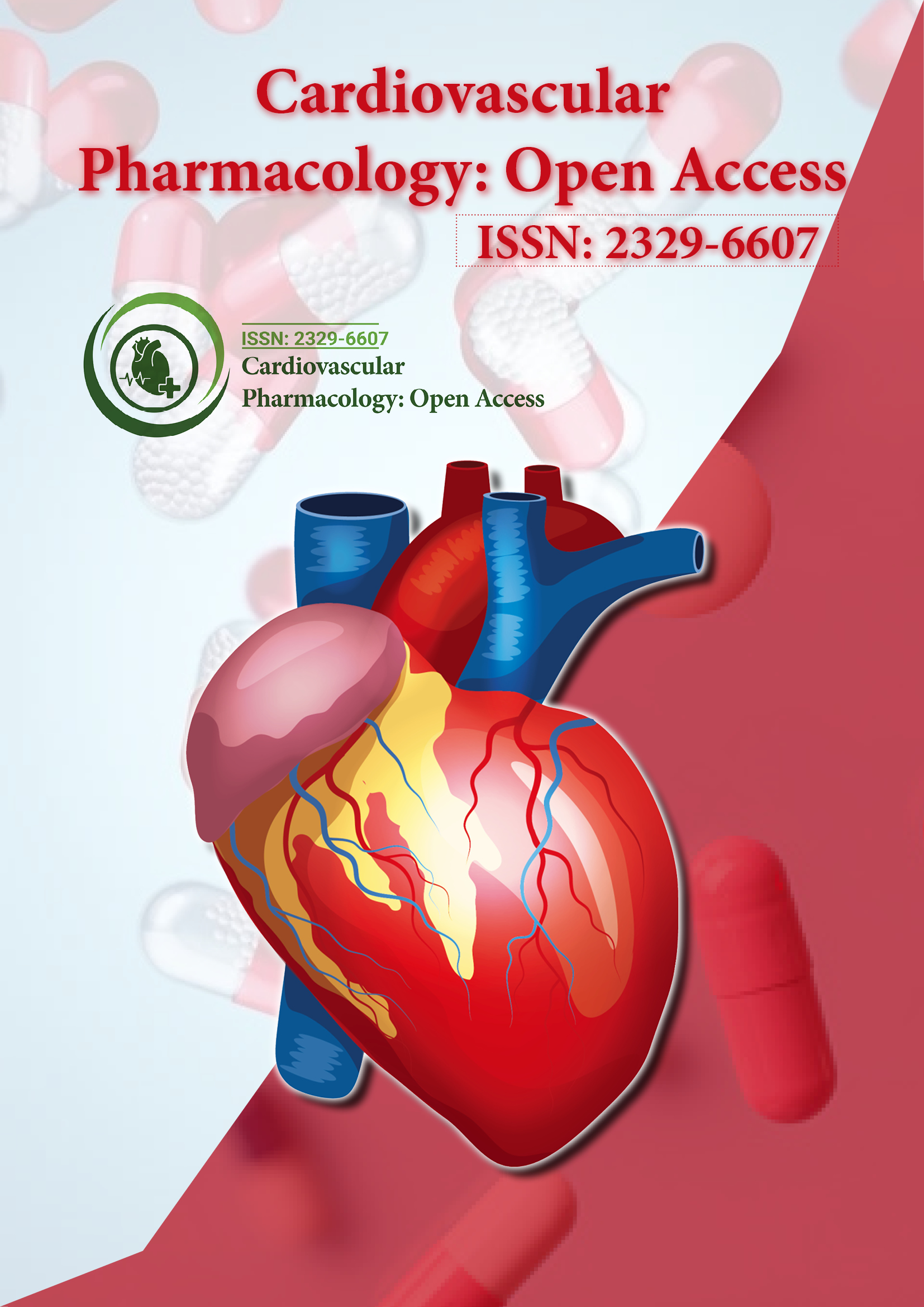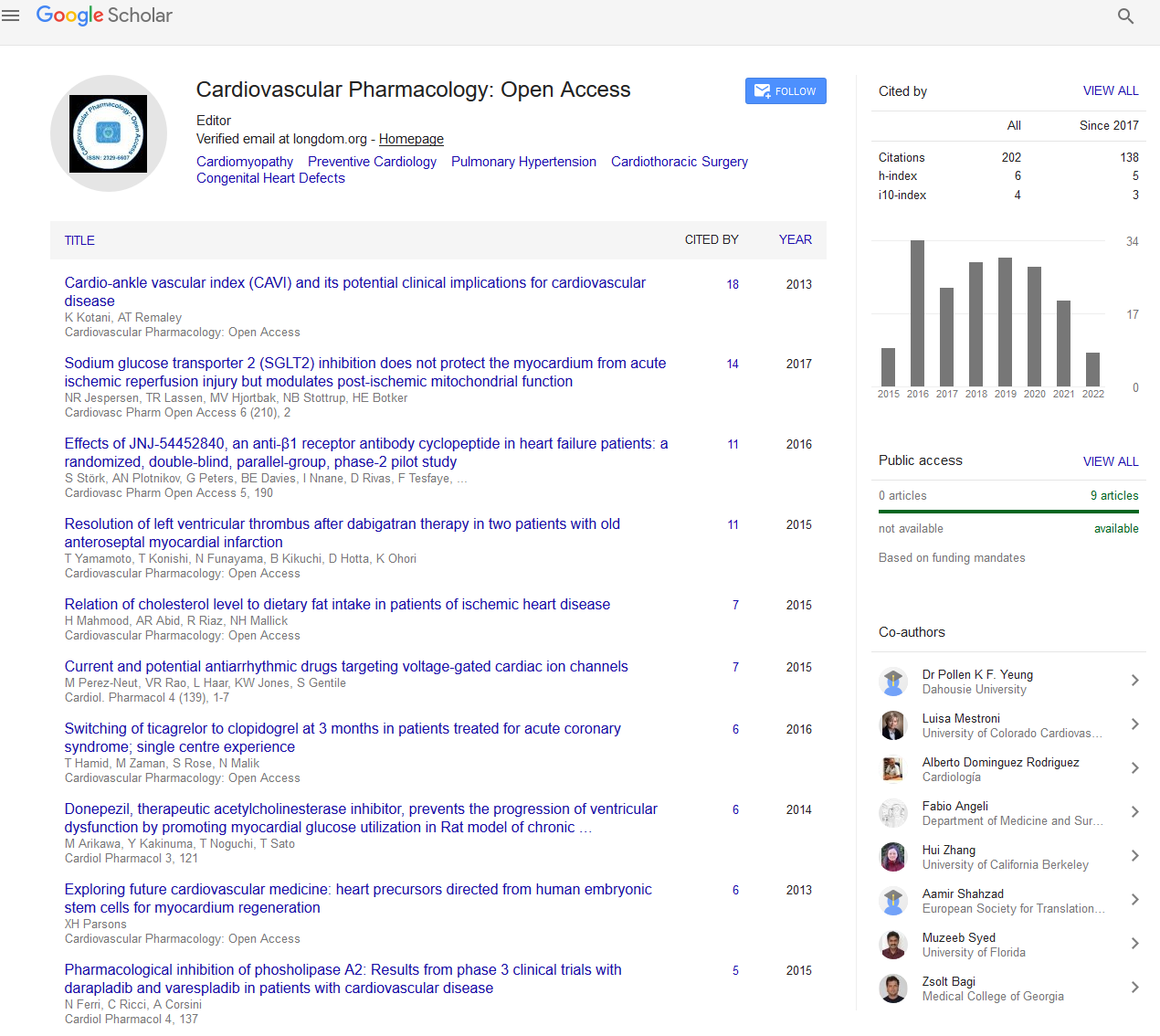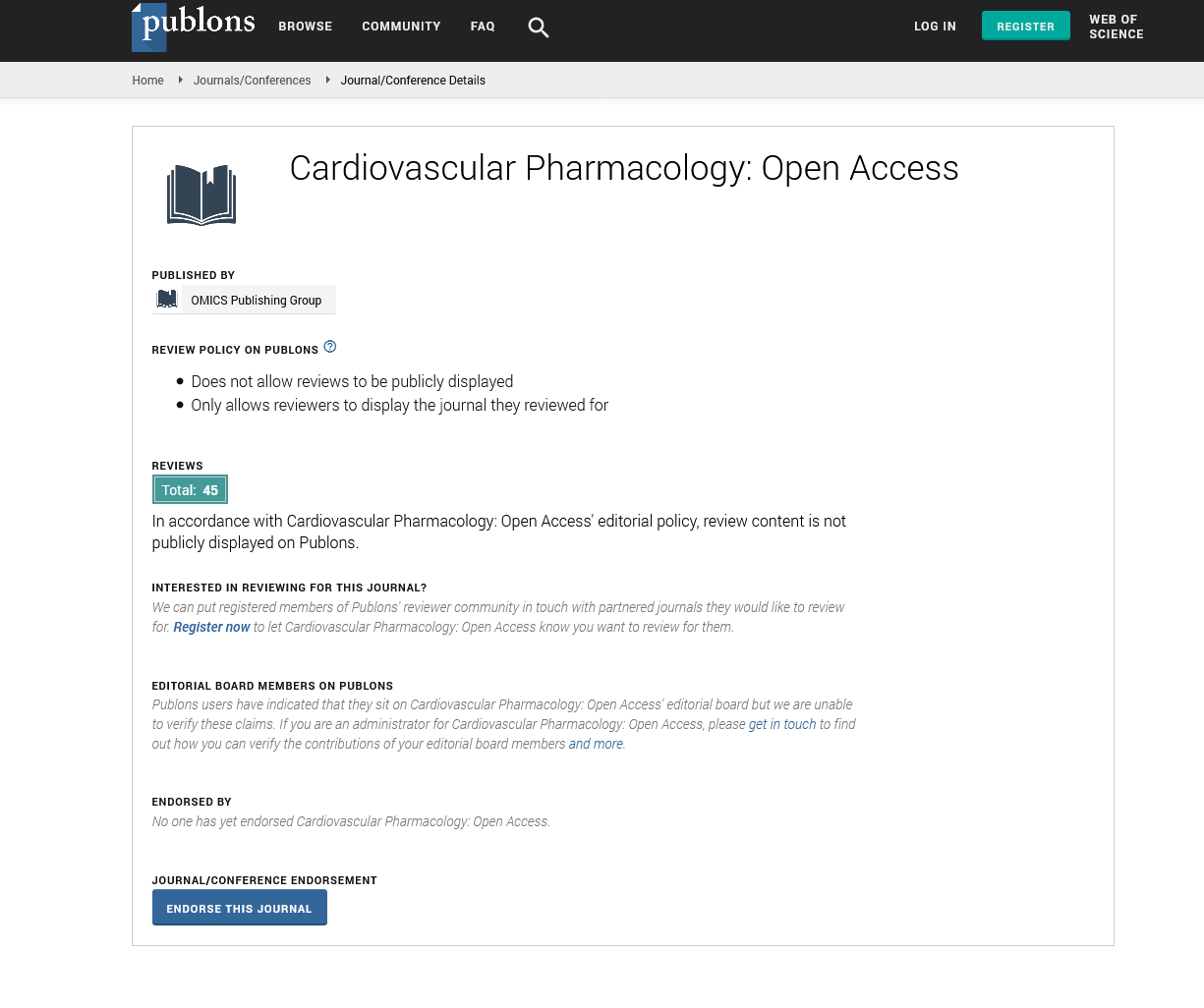Indexed In
- Open J Gate
- Cosmos IF
- RefSeek
- Hamdard University
- EBSCO A-Z
- OCLC- WorldCat
- Publons
- Geneva Foundation for Medical Education and Research
- Euro Pub
- Google Scholar
Useful Links
Share This Page
Journal Flyer

Open Access Journals
- Agri and Aquaculture
- Biochemistry
- Bioinformatics & Systems Biology
- Business & Management
- Chemistry
- Clinical Sciences
- Engineering
- Food & Nutrition
- General Science
- Genetics & Molecular Biology
- Immunology & Microbiology
- Medical Sciences
- Neuroscience & Psychology
- Nursing & Health Care
- Pharmaceutical Sciences
Commentary - (2025) Volume 14, Issue 1
Advances in Targeted Antithrombotic Therapy for Safer Thrombosis Management
Maria Popescu*Received: 19-Feb-2025, Manuscript No. CPO-25-28933; Editor assigned: 21-Feb-2025, Pre QC No. CPO-25-28933 (PQ); Reviewed: 07-Mar-2025, QC No. CPO-25-28933; Revised: 14-Mar-2025, Manuscript No. CPO-25-28933 (R); Published: 21-Mar-2025, DOI: 10.35248/2329-6607.25.14.422
Description
Thrombosis remains a critical pathological process underlying many cardiovascular and cerebrovascular diseases, including myocardial infarction, stroke, deep vein thrombosis and pulmonary embolism. Despite advances in understanding and treating thrombotic disorders, thrombosis continues to contribute substantially to global morbidity and mortality. This challenge lies the complex exchange of cellular and molecular mechanisms driving thrombus formation, which has motivated extensive research into novel and targeted antithrombotic therapies aimed at improving efficacy while minimizing bleeding risks.
Thrombosis is a multifactorial process involving the activation and aggregation of platelets, the coagulation cascade and the interaction with the vascular endothelium and inflammatory cells. Initiated often by endothelial injury or dysfunction, subendothelial collagen exposure and tissue factor release trigger platelet adhesion and activation. Activated platelets release ADP, thromboxane A2 and express glycoprotein IIb/IIIa receptors, facilitating further platelet recruitment and aggregation. Simultaneously, the coagulation cascade is activated via intrinsic and extrinsic pathways, culminating in thrombin generation, fibrin formation and stabilization of the developing thrombus. Emerging evidence has also highlighted the role of Neutrophil Extracellular Traps (NETs) and microparticles as contributors to thrombogenesis, reflecting the crosstalk between inflammation and coagulation.
Current antithrombotic therapies broadly include antiplatelet agents, anticoagulants and fibrinolytics, each targeting distinct components of thrombosis. Aspirin and P2Y12 inhibitors (e.g., clopidogrel) inhibit platelet activation and aggregation, while anticoagulants such as heparins, vitamin K antagonists and Direct Oral Anticoagulants (DOACs) interfere with various coagulation factors. Despite their proven benefits, these agents are limited by significant bleeding risks and variable patient responses.
In recent years, research has intensified on developing targeted antithrombotic drugs that selectively inhibit critical thrombosis pathways while preserving hemostasis. One potential area is the inhibition of factor XI and factor XII in the intrinsic coagulation pathway. Preclinical and early clinical studies suggest that targeting these factors can reduce thrombosis with a lower bleeding risk, as these factors appear to be dispensable for normal hemostasis but essential in pathologic thrombosis. Several factor XIa inhibitors, antisense oligonucleotides and monoclonal antibodies are currently undergoing clinical trials, signaling a paradigm shift toward safer anticoagulation.
Another advancing frontier involves novel antiplatelet agents that go beyond traditional P2Y12 or COX-1 inhibition. Agents targeting Protease-Activated Receptors (PARs), particularly PAR-1 and PAR-4 antagonists, have shown potential to reduce platelet activation triggered by thrombin. Likewise, Glycoprotein VI (GPVI) inhibitors offer a potential strategy to block platelet-collagen interactions essential for thrombus initiation without markedly increasing bleeding risk.
The integration of precision medicine and pharmacogenomics also contributes to progress in antithrombotic therapy. Variations in genes encoding cytochrome P450 enzymes and platelet receptors influence drug metabolism and efficacy and identifying such genetic markers can help tailor therapy to optimize outcomes and minimize adverse effects. Additionally, advances in nanotechnology and drug delivery systems are enabling the development of targeted drug carriers that localize antithrombotic agents to thrombus sites, potentially enhancing efficacy and reducing systemic exposure.
Despite these advances, challenges remain. Thrombosis is a dynamic and context-dependent process influenced by patient-specific factors such as comorbidities, inflammation and genetic predisposition. Balancing effective thrombosis prevention with safety necessitates continuous evaluation of novel agents in diverse patient populations. Furthermore, the complexity of thrombosis mechanisms demands combination therapies targeting multiple pathways, which must be carefully studied to avoid compounded bleeding risks.
In conclusion, unraveling the intricate mechanisms of thrombosis has created the path for the development of targeted antithrombotic drugs that potential improved safety and efficacy profiles. The ongoing transition from broad-spectrum anticoagulants and antiplatelets to selective inhibitors of specific coagulation factors and platelet receptors marks a significant milestone in thrombosis management. Continued multidisciplinary research integrating molecular biology, clinical pharmacology and patient-centered approaches will be significant to translate these scientific advances into tangible benefits for patients. As our understanding deepens, the hope is to deliver personalized antithrombotic therapies that effectively prevent thrombosis while preserving the delicate balance of hemostasis.
Citation: Popescu M (2025). Advances in Targeted Antithrombotic Therapy for Safer Thrombosis Management. Cardiovasc Pharm. 14:422.
Copyright: © 2025 Popescu M. This is an open access article distributed under the terms of the Creative Commons Attribution License, which permits unrestricted use, distribution, and reproduction in any medium, provided the original author and source are credited.


